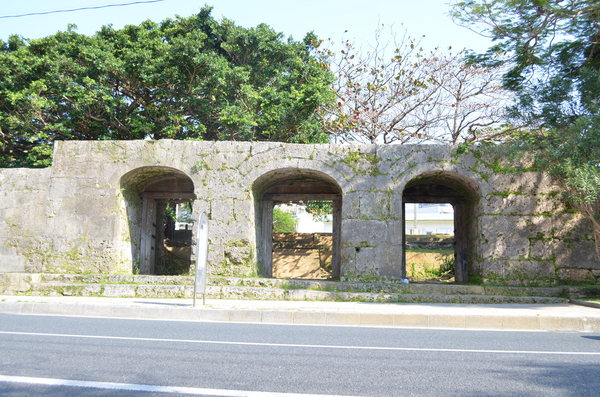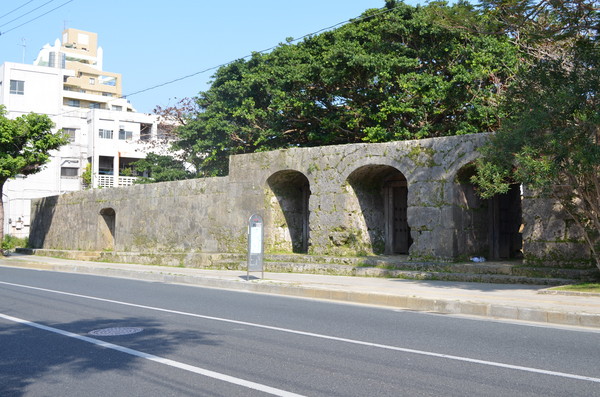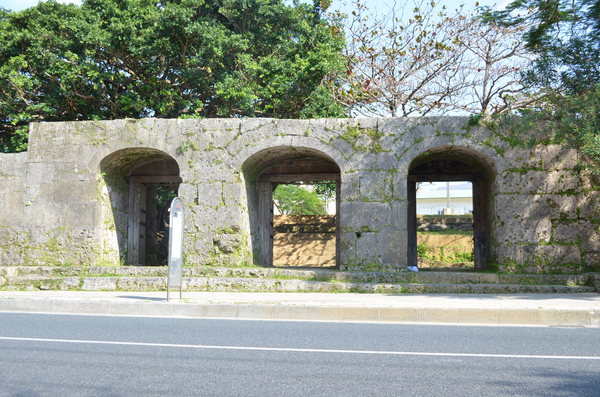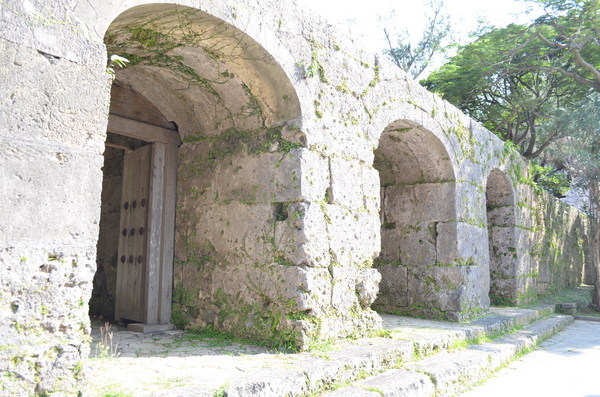Old Sogen-ji Temple, First Gate and Stone Wall
Historic sitesHistory





Old Sogen-ji Temple is a temple of the Rinzai sect of Buddhism. Sango (the title prefixed to the name of a Buddhist temple) is Reitokuzan. The temple is a royal mausoleum of the Ryukyu Kingdom to rest successive kings from Shunten to Sho Tai. When investiture envoys came to Ryukyu, a funeral for the past king “Sanou Yusai” was held here before the investiture ceremony for a new king was held at Shuri Castle.
Basic information
- Address
- 900-0012 1-9-1 Tomari Naha Okinawa
- TEL
- 098-917-3501 (English is not supported) Municipal cultural property division of Naha city
- Business hours
- Nothing in particular
- Close day
- Nothing in particular
- Charge
- Free
- Parking
- None
- Access information
- In front of Sogenji-mae bus stop.
Additional Information
- Academic information
- Cultural property(National designated architecture)
Designated date: May 15, 1972
Old Sogen-ji Temple is a temple of the Rinzai sect of the Buddhism. Sango (the title prefixed to the name of a Buddhist temple) is Reitokuzan. The temple is a royal mausoleum of the Ryukyu Kingdom to rest successive kings from Shunten to Sho Tai. When investiture envoys came to Ryukyu, a funeral for the past king “Sanou Yusai” was held here before the investiture ceremony for a new king was held at Shuri Castle.
Sogen-ji Geba-hi Monument in front of the gate gives us an estimated year of 1527 right after the enthronement of King Sho Sei. The “First Gate and Stonewall” is an arched stone gate at the front and center and the surrounding stone walls. The gate is about 13.18m wide, about 3.94m thick with a wooden door. The central gate opening is about 2.51m wide and the left and right openings are about 2.18m wide respectively. Centering around this gate, stone walls on both sides are piled with cut stones (ashlar). The stone gate is completely unleveled with side gates on both sides, displaying a dignified appearance. It is estimated to have been built from the reigns of King Sho Shin and King Sho Sei (15C to the mid 16C). This is a typical masonry structure in Okinawa for this ingenious design. - Quote
- Naha Board of Education Cultural Heritage Division (2007) "Naha Cultural Property" Naha Board of Education
